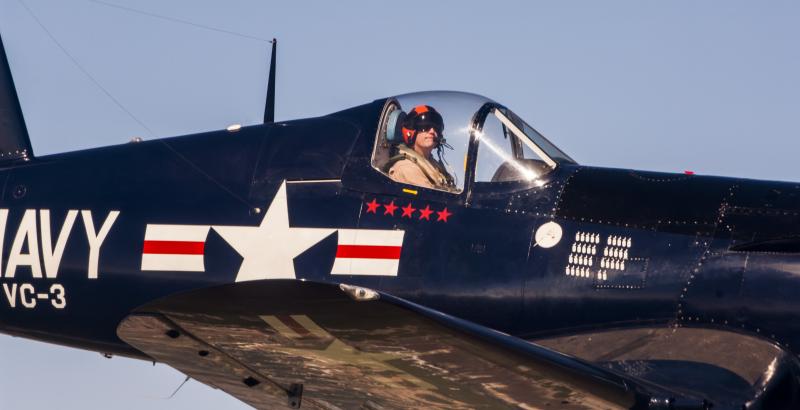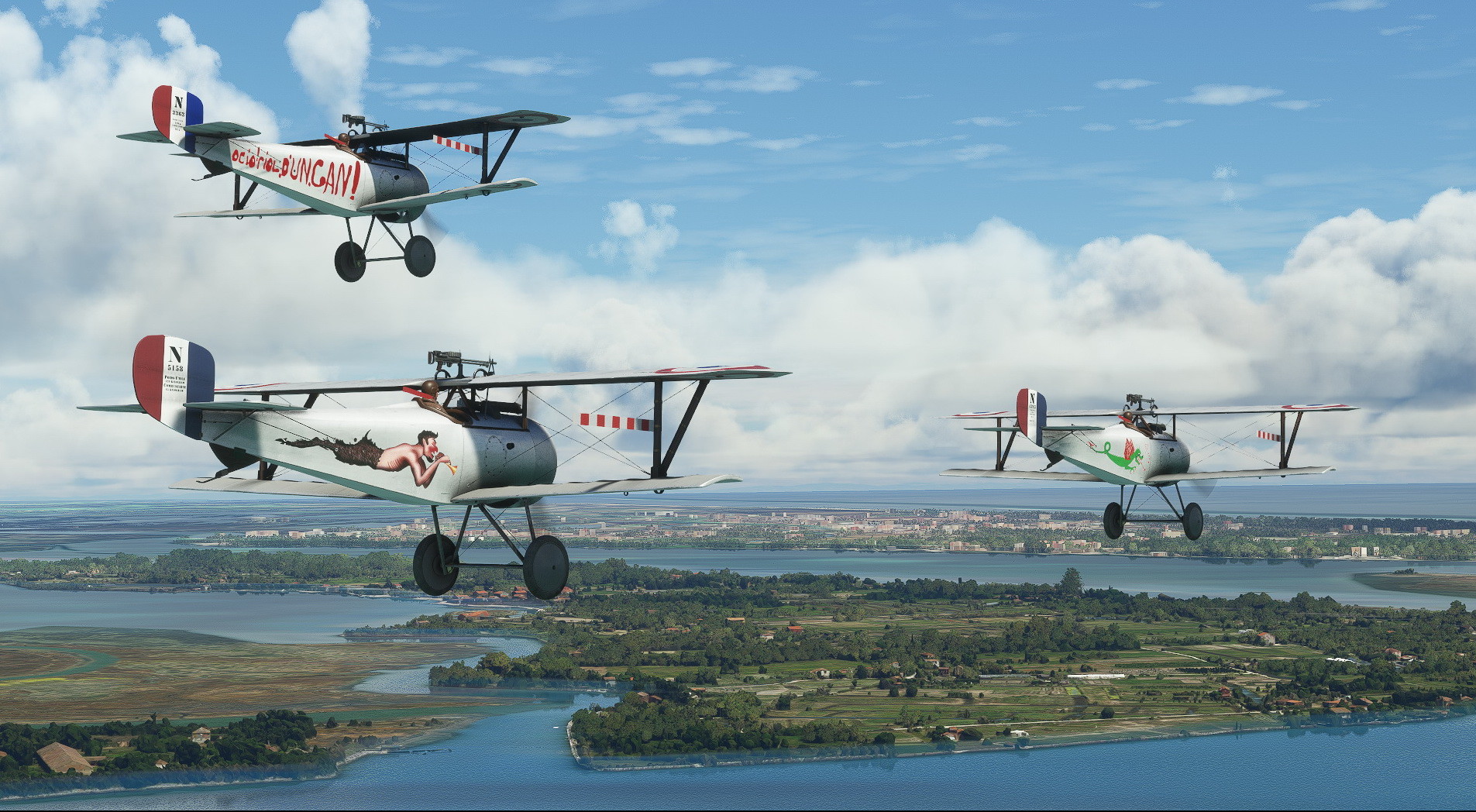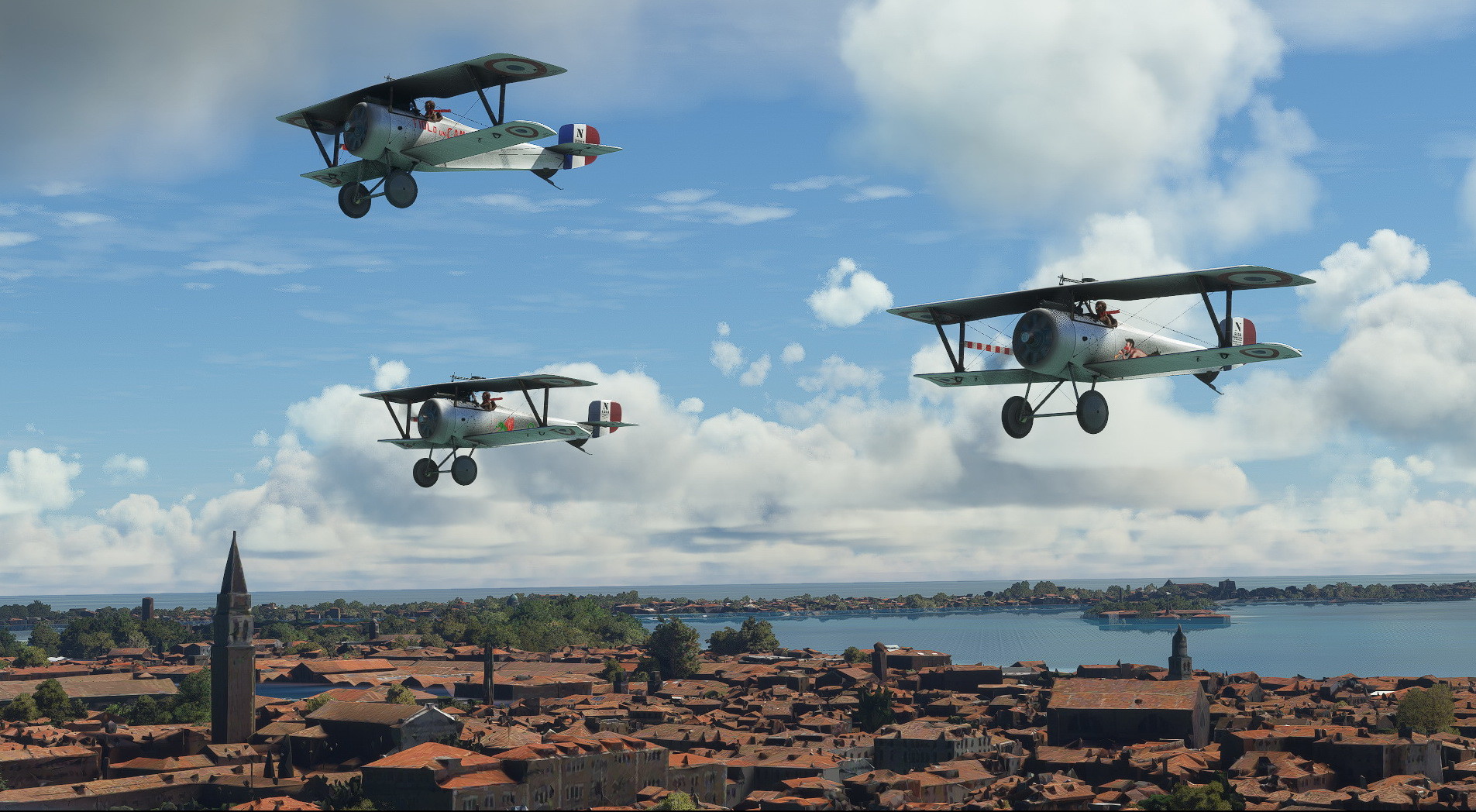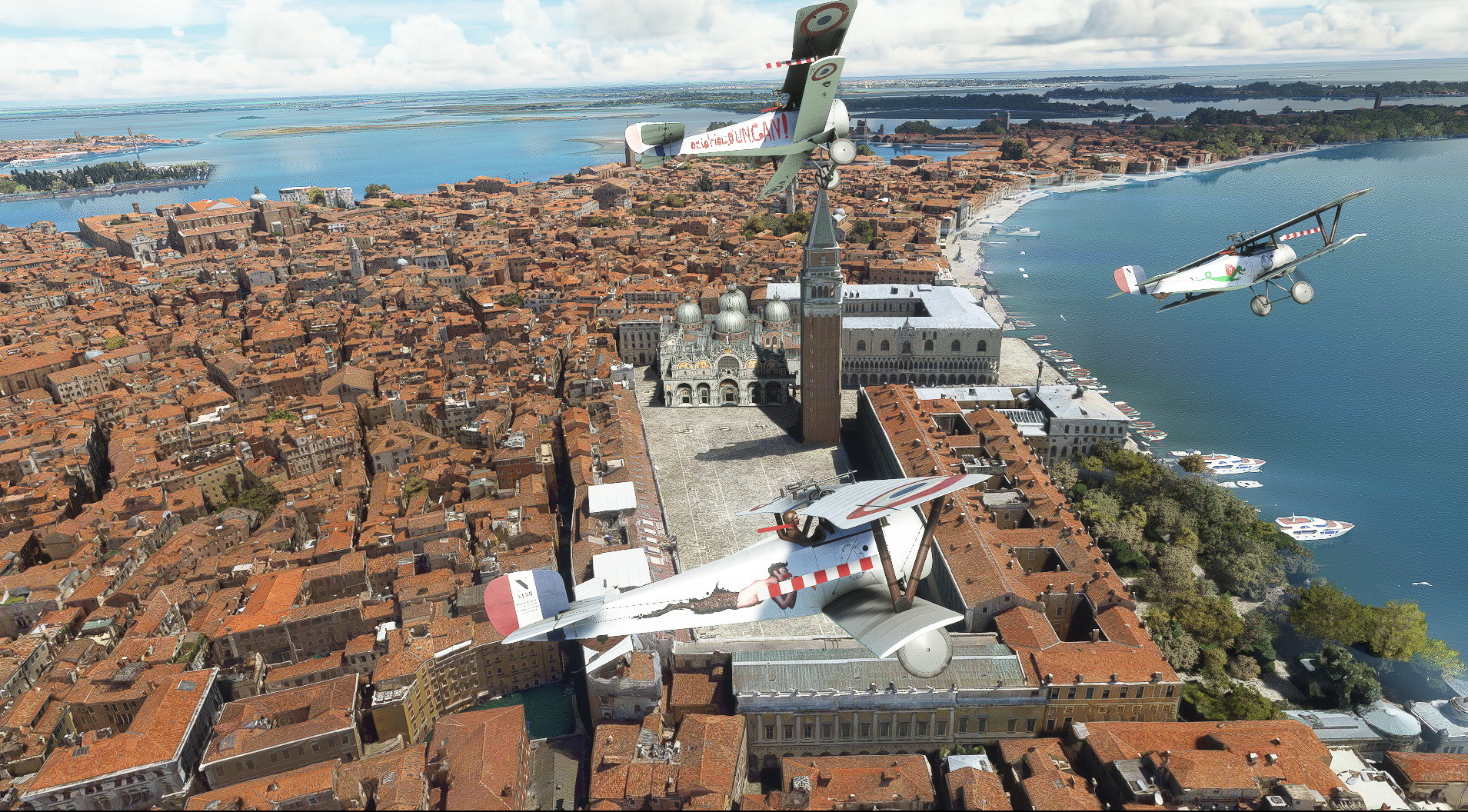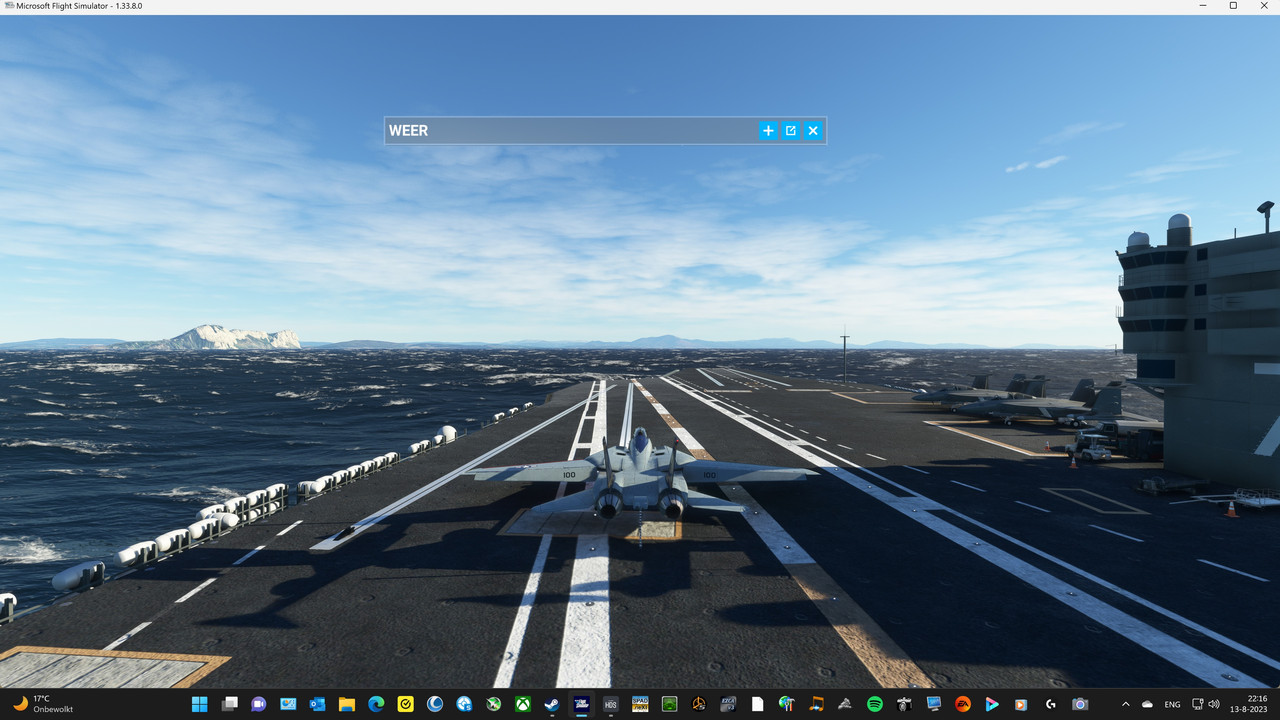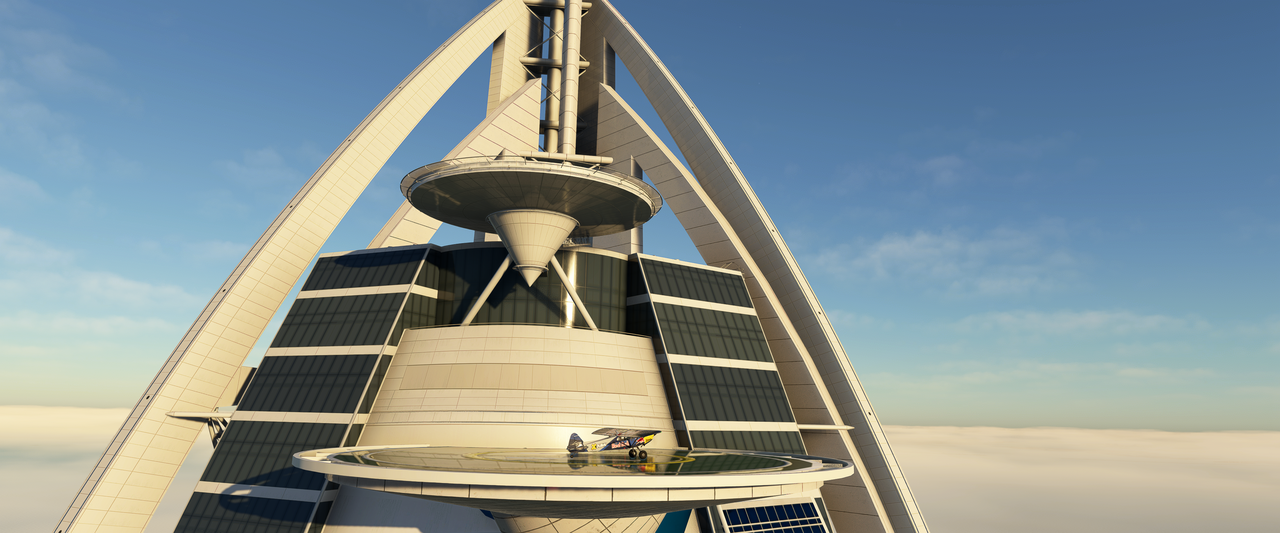Here is a little guided look around the excellent freeware scenery of the Military Aviation Museum located in Virginia Beach, Virginia (
https://flightsim.to/file/52438/42va-military-aviation-museum). Each structure is modeled and textured to match those you can find when visiting the real location. Also, all of the aircraft in these screenshots are either copies of the very aircraft that are owned & operated by the museum (via repaints), or are of the same type. The museum boasts one of the largest collections of flying WWI and WWII aircraft in the United States, with a large grass runway. The scenery makes use of one of the vintage aircraft libraries, placing specific WWI and WWII aircraft around the airfield, which in some of the screenshots I have installed and in some others I have purposely uninstalled (very simple, by just moving the library folder in or out of the community folder).
The main museum hangars, which house the majority of the museum's flying aircraft, are modeled off of the Art Deco age of the 1930s, including a period-style water tower used for the fire suppression system. The owner, Jerry Yagen, has been a long-time friend of Kermit Weeks, and you can see how Weeks' Fantasy of Flight, built several years beforehand, provided inspiration for the design of the MAM main facilities. The Corsair in this screenshot is the Milviz/Blackbird model, with a repaint depicting the museum's FG-1D BuNo. 92508 (N46RL), available here:
https://flightsim.to/file/55447/milviz-fg-1d-corsair-n46rl-vf-17-jolly-rogers-goodyear

There are a couple of genuine World War Two era structures located at the museum/airfield site. One of these is an original control tower that once stood at former RAF Goxhill, which became the first USAAF airbase in England in 1942. Becoming neglected and quite dilapidated over the decades following WWII, the control tower was eventually acquired by Jerry Yagen and was disassembled, brick by brick, and shipped to the US. At the museum, it was reconstructed and restored to its wartime appearance. The Spitfire in this screenshot is the FlyingIron model, with a repaint depicting the museum's Spitfire Mk.IX MJ730 (N730MJ), available here:
https://flightsim.to/file/15921/spitfire-mk-ix-mj730-the-co-s-query-n730mj

Another angle on the Goxhill watch tower. The Tiger Moth in this screenshot is the Ant's Airplanes model, with a repaint depicting the museum's Tiger Moth T-5525 (N6463), available here:
https://flightsim.to/file/50590/de-havilland-dh-82-tiger-moth-t-5525

Another genuine World War Two era structure at the museum/airfield is a hangar from Cottbus, Germany. Originally built in 1934 for use by a flight school, during World War Two the hangar was put to use by the Focke-Wulf company, which at Cottbus manufactured and test flew the Fw 200, Fw 190 and Ta 152. Although severely damaged in an 8th Air Force bombing raid in 1944, it was repaired and continued to be used throughout the Cold War. Jerry Yagen acquired the hangar in 2004 and had it disassembled and shipped to Virginia Beach where it was reassembled on the western end of the airfield. Today, it houses a number of the museum's 1930s and WWII-era German aircraft. The museum owns and operates the only flyable Ju 52 in North America, but a repaint of that specific aircraft has not yet been done, so I have used a different repaint here. The Ju 52 is able to be moved inside the Cottbus hangar, and flanked by smaller German types (including an original, static, Fw 190A).

And another screenshot in front of the Cottbus hangar. The museum's Bf 109G-4 WkNr.19257 (N109GY) is one of only two DB-powered '109s currently flying in North America. This is of course the FlyingIron model with the repaint I just recently released, available here:
https://flightsim.to/file/59433/messerschmitt-bf-109g-4-black-1-wknr-19257-n109gy The Storch is part of the static scenery.

To house the museum's impressive number of replica World War I aircraft, a WWI-style hangar was built based on the design aesthetics of a 1918 blueprint drawing for an "Aeroplane Twin Shed" built for the Royal Flying Corps. However, instead of twin bays, three were built in order to accomodate the number of aircraft, and sliding doors were added, where as originally the open bays would have simply been covered with canvas curtains. Other modern amenities incorporated include a concrete floor, climate control (for protecting the wood and fabric aircraft), a modern electrical system and hurricane fasteners for the roof. Although not depicted here, a repaint of the museum's replica Curtiss Jenny (N6898C) is available here:
https://flightsim.to/file/50136/curtiss-jn-4d-jenny-n6898c

And finally, just a couple screenshots, taking off from the grass runway, and another overall view of the airfield from the air. Although I've heard another flight simmer describe the runway as being small and challenging, that's only really an impression based on the trees that line the runway. The runway is nearly 5000 ft long and 190 ft wide, so actually quite large, and it was more than ample for when they used to own and operate the B-17G 'Chuckie' (before it was sold to the Erickson Aircraft Collection). Some of the other larger types that fly at the museum/airfield include the Ju 52, C-46 Commando and PBY Catalina.


